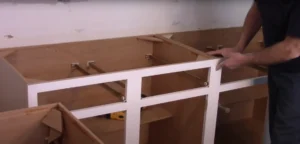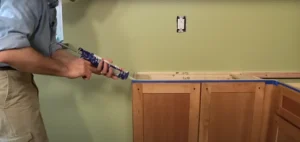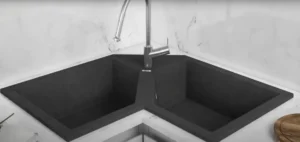Are you thinking about a bathroom remodel but unsure how long it will take? Many homeowners face this question when planning to update their bathrooms. You might worry about the disruptions and wondering if it’s worth the hassle.
The truth is, “How Long Does It Take To Do A Complete Bathroom Remodel” varies depending on many factors. On average, it takes 5-7 weeks from start to finish for a full main bathroom renovation.
However, some projects may take as little as 3-4 weeks or stretch beyond two months.
In this blog post, you’ll learn about the different phases of remodeling your bathroom—from design and demolition to final inspections. We’ll also discuss what can influence timelines so you can plan better and avoid surprises.
Keep reading!
Key Takeaways
- A typical bathroom remodel takes 5-7 weeks but can range from 3-10 weeks based on complexity.
- The pre-construction phase includes design, budgeting, contractor selection, and permit acquisition, which sets the foundation for a smooth project.
- The construction phase involves demolition, plumbing and electrical work, insulation installation, drywall hanging, painting, tiling preparation and installation, flooring installation, and finally fixture setup. Each of these tasks has specific timelines ranging from one to several days.
- Post-construction focuses on final inspections and adjustments. Contractors conduct walkthroughs with homeowners to ensure satisfaction before completing any necessary tweaks.
The duration of the remodel depends on factors like current bathroom condition, whether it’s DIY or professional execution (which averages 23 days), number of contractors involved in the project coordination effort.
Pre-Construction Phase
A successful bathroom remodel starts with careful planning and design. Homeowners should set a realistic budget and schedule to ensure the project runs smoothly.
Design and Budget Planning
Setting a solid budget is the first step in any bathroom remodel. This phase involves architectural development and total design planning, ensuring every detail fits your vision. During this stage, you should establish rough budgets for materials like tiles, fixtures, and labor costs.
The design process includes civil and estimating work to give an accurate financial picture. Homeowners can access detailed pricing guides for comprehensive plans covering bathrooms, kitchens, basements, or whole-house renovations from HDC.
This preparation helps prevent surprises during construction by setting clear financial parameters early on.
Choosing Contractors and Scheduling
Choosing the right general contractor for your bathroom remodel is crucial. Start by asking friends or neighbors for recommendations. Online reviews can also help you gauge a contractor’s reputation.
Select a few contractors to interview and ask them about their experience with similar projects. Meeting with subcontractors early helps finalize the fixed price and ensures everyone understands the scope of work.
Scheduling your project efficiently requires clear communication and detailed planning. Work closely with your chosen firm to outline each step in the timeline, including plumbing and electrical work phases, tiling preparation, and flooring installation days.
Open communication keeps everyone informed about progress and any potential delays, helping maintain a smooth remodeling process without unnecessary hold-ups.
Permit Acquisition
Homeowners must secure permits for electrical and plumbing work before starting a bathroom remodel. City or county permits can take as little as two weeks or extend to several months, depending on the project’s complexity and local regulations.
Submitting all necessary documents promptly helps speed up this process.
Inspections might be required before completing finished work, ensuring everything meets safety standards. Working closely with general contractors familiar with your area can make handling these requirements much smoother.
Construction Phase
The construction phase involves several crucial steps to transform your bathroom. Skilled contractors handle tasks like plumbing, electrical work, and tiling preparation and installation.
Demolition and Removal
Demolition and removal are crucial steps in a bathroom remodel. This phase typically takes 1-2 days. Workers will remove old bathtubs, sinks, and fixtures swiftly to make way for new installations.
Full demolition includes tearing out surrounding walls if necessary.
Expect noise and debris during this part of the remodel. Contractors use tools like sledgehammers and crowbars to break down structures efficiently. Dust barriers help contain messes, protecting your home from excessive dust spread.
A tentative start date is provided after signing the contract with your general contractor. Proper planning ensures smooth progress without delays. Professional crews handle water damage prevention by shutting off plumbing before starting work.
Plumbing and Electrical Work
Plumbing and electrical work are crucial steps in a bathroom remodel. These tasks ensure the functionality and safety of your new space. Typically, plumbing rough-in takes 1 to 2 days.
This involves installing water supply lines and drainpipes where fixtures will be placed. Electricians then step in for the electrical rough-in, which also requires 1 to 2 days. They handle wiring for outlets, light fixtures, and switches.
Logistical systems such as plumbing and electrical can be time-consuming aspects of the remodeling process but are essential for a full bathroom overhaul. Proper installation of these systems impacts both performance and safety standards long-term, ensuring you get a better return on investment from your remodel project.
Both plumbers and electricians must adhere to local codes based on your postal code requirements before moving forward with insulation or drywall stages.
Insulation, Drywall, and Painting
Applying insulation, hanging drywall, and painting typically take 1 to 4 days. Insulation provides energy efficiency and comfort by keeping warm air in during the winter and out during the summer.
Properly installed insulation is crucial for maintaining consistent indoor temperatures.
Drywall installation usually takes about three days. Contractors will hang sheets of drywall onto your bathroom’s skeletal framework using screws or nails. They then apply joint compound to seams and corners to create a smooth surface ready for painting.
The final step of this phase involves painting, which can take an extra one to two days depending on the paint type used and drying times between coats. This sequence ensures walls are visually appealing, functional, and durable.
Tiling and Flooring Installation
Tiling preparation and installation typically takes about seven days or more. This step includes measuring, cutting tiles to fit the design, and applying adhesive to hold everything in place.
Proper grout application ensures tiles stay secure and water-resistant. Precision matters here; any errors can lead to future problems like uneven surfaces or cracked tiles.
Flooring installation usually follows tiling and can be completed within 1-2 days. Flooring materials need careful selection based on bathroom use—choices include ceramic, vinyl, or natural stone.
Professional installers often complete this task quickly, ensuring a durable surface ready for daily wear and tear.
Fixture and Accessory Installation
Fixture installation typically takes around two days. This phase involves installing bathroom fixtures such as sinks, toilets, and bathtubs. Professionals also hook up these components to the plumbing system during this time.
Electricians will install light fixtures, ensuring proper placement and secure connections.
Next comes adding accessories to complete the look and functionality of your bathroom. Mounting a shower curtain or installing towel bars is straightforward but essential for daily use.
Adding soap dispensers can take an additional three days in total for a small bath remodel, ensuring all elements fit perfectly into your newly renovated space.
General contracting professionals aim to streamline these tasks efficiently without compromising quality workmanship. They coordinate plumbers, electricians, and other specialists efficiently so that each part of the installation is handled promptly and accurately.
Post-Construction Phase
The post-construction phase focuses on finalizing the project to ensure everything meets your expectations. Contractors conduct a walkthrough, making any necessary adjustments before the final inspections take place.
Contractor Walkthrough and Adjustments
After completing the construction, the contractor will conduct a thorough walkthrough with you. This step ensures that all aspects of the remodel meet your expectations and quality standards.
During this walkthrough, note any issues or concerns like uneven tiles or unfinished paintwork. The contractor will address these problems promptly.
This phase usually takes about one week. Final adjustments may include minor fixes such as tightening faucets or ensuring all electrical outlets are functional. Make sure you’re satisfied with every detail before making the final payment to your contractor.
Providing honest feedback helps improve future projects and can boost your satisfaction level with completed work.
Final Inspections and Approvals
Final inspections make sure your bathroom remodel meets all building codes. Inspectors review plumbing, electrical work, and structural elements. They ensure that everything is safe and up to standard.
Approval from the inspector means your project complies with legal requirements. This step usually takes a day but can be delayed if you need corrections or have to wait for inspector availability.
Obtaining the proper permits early on helps avoid such delays.
Factors Influencing Remodel Duration
The current condition of your bathroom can significantly affect the remodel timeline. Opting for a DIY approach may also extend the project duration compared to hiring professionals.
Current Bathroom Condition
A bathroom’s current condition significantly impacts the remodel timeline. Old bathrooms often have outdated plumbing, wiring, or hidden damage that must be addressed. For example, if your existing bathroom has water damage behind the walls, mold may need to be removed before any renovations can proceed.
These repairs add time and complexity to the project.
The size of your bathroom also matters. Smaller spaces might seem simpler but can still present challenges due to confined working areas. On the other hand, larger bathrooms offer more room for contractors but require more materials and attention to detail in every phase from demolition to tiling and fixture installation.
In newer homes with modern systems already in place, less prep work is usually required, making the remodeling process faster. Conversely, older homes often lack adequate insulation or up-to-date electrical setups.
Decades-old pipes might need replacing entirely—a task that adds both cost and time to your renovation plans.
DIY vs. Professional Execution
When planning a bathroom remodel, deciding between a DIY approach and hiring professionals can significantly impact the project timeline and quality. Homeowners need to consider various factors.
| Aspect | DIY Execution | Professional Execution |
| Average Time | A couple of months (working primarily on weekends) | 23 days on average |
| Experience and Skill | Dependent on homeowner’s skills and experience | High, due to professional training and extensive experience |
| Costs | Potentially lower, as labor is not outsourced | Higher, due to labor and expertise fees |
| Resource Availability | Limited, often restricted to weekends and evenings | Adequate, with dedicated crew and resources |
| Project Management | Handled by the homeowner; can be stressful and time-consuming | Managed by professionals; streamlined and efficient process |
| Quality of Work | Varies based on homeowner’s competency and tools | Consistently high due to professional standards |
| Handling Permits and Inspections | Homeowner’s responsibility; can be challenging | Professionals handle permits and inspections, ensuring compliance |
| Unexpected Issues | More likely to encounter delays and problems | Professionals can quickly address and resolve issues |
Selecting between a DIY approach and professional execution depends on factors like budget, time availability, and desire for quality. A DIY remodel might save money but can extend the timeline due to limited working hours. Conversely, professionals can complete the project faster, though at a higher cost.
Number of Contractors Involved
The number of contractors involved in a bathroom remodel can vary depending on the size and complexity of the project. A simple hallway bathroom may need only a plumber and an electrician, while a master bath overhaul could require multiple specialists, including tilers, painters, and HVAC technicians.
Each contractor has a specific role to play, which means coordinating their schedules is crucial for staying on track.
Proper communication among all involved parties ensures that everyone knows their responsibilities and timelines. Miscommunication or delays from one contractor can impact others down the line.
Therefore, working with an experienced general contractor who can manage these connections efficiently often helps keep your remodel moving smoothly toward completion.
Material Availability and Delivery
Special materials and fixtures can require special orders, delaying the start of your remodel. Imported items often take longer to arrive, extending the project timeline. For instance, a custom marble countertop from Italy could add weeks to your schedule.
Consider using readily available alternatives for quicker progress. Local suppliers typically have faster delivery times. Choosing domestic products or in-stock items helps keep your remodel on track without significant delays.
While planning, factor in potential delays due to holidays or weekends when deliveries might not occur. Coordinating with contractors ahead of time ensures that all necessary materials are ready when needed, minimizing downtime and unexpected pauses in construction.
Understanding the Construction Phase
A complete bathroom remodel usually spans different phases and involves careful planning. The process may take anywhere from three to ten weeks, depending on various factors. Each stage, from design to final inspections, contributes to the overall timeline.
Homeowners should prepare for potential delays but know that a beautiful new bathroom is worth the wait.
FAQs
1. How long does a complete bathroom remodel usually take?
A complete bathroom remodel usually takes about 2 to 4 weeks, depending on the size and complexity of the project.
2. What factors can affect the timeline for a bathroom remodel?
Factors that can affect the timeline include the scope of work, availability of materials, and any unexpected issues like plumbing or electrical problems.
3. Can I speed up my bathroom remodeling process?
Yes, you can speed up your remodeling process by planning ahead, hiring experienced contractors, and ensuring all materials are ready before starting.
4. Is it possible for a bathroom remodel to take longer than expected?
Yes, unforeseen issues such as hidden water damage or structural repairs can extend the time needed for completion beyond initial estimates.





